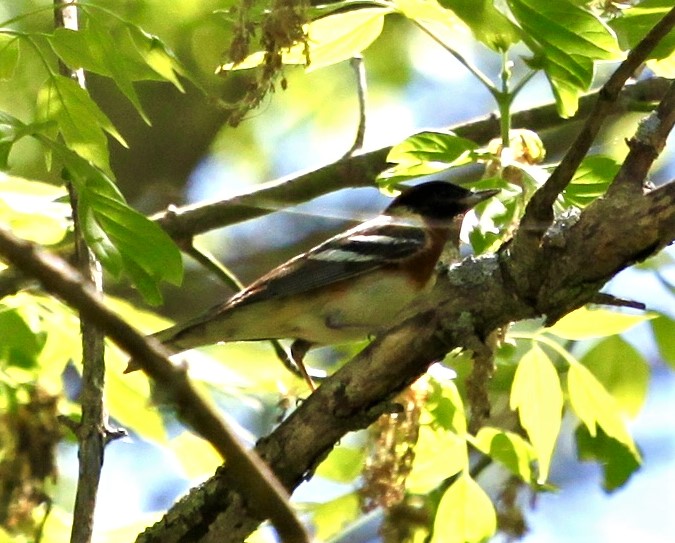
[We have a VERY fine crop of Young Ornithologists. Below is the Lowville report contribution of Sarah Sharp, an up and comer.]
This morning was relatively busy, with the first net round being the most productive (as per usual). David [Brewer] and I were treated to a beautiful dawn chorus, with many Warblers, Indigo Buntings, Gray Catbirds, the Wood Thrush and a notable FOY [First of Year] Black-billed Cuckoo singing. The property owner came down for a visit with his four grandchildren in tow, just in time to watch me extract three Tennessee Warblers from the aerial net. They accompanied us back to the station to learn about how banding works (as well as some fun facts about TEWAs). We banded a good diversity of warblers including the FOY BTNWs. Unfortunately the many singing Parulas continue to evade the nets. We had a great variety of birds and it was consistent until around 10am, when it started to get very warm. The insects were out in full force by this time, with many black flies and mosquitos following us on net rounds. I also took a very tangled Carpenter Bee out of a net right before we closed up.
Banded 27:
1 BTBW
3 COYE
1 TRFL
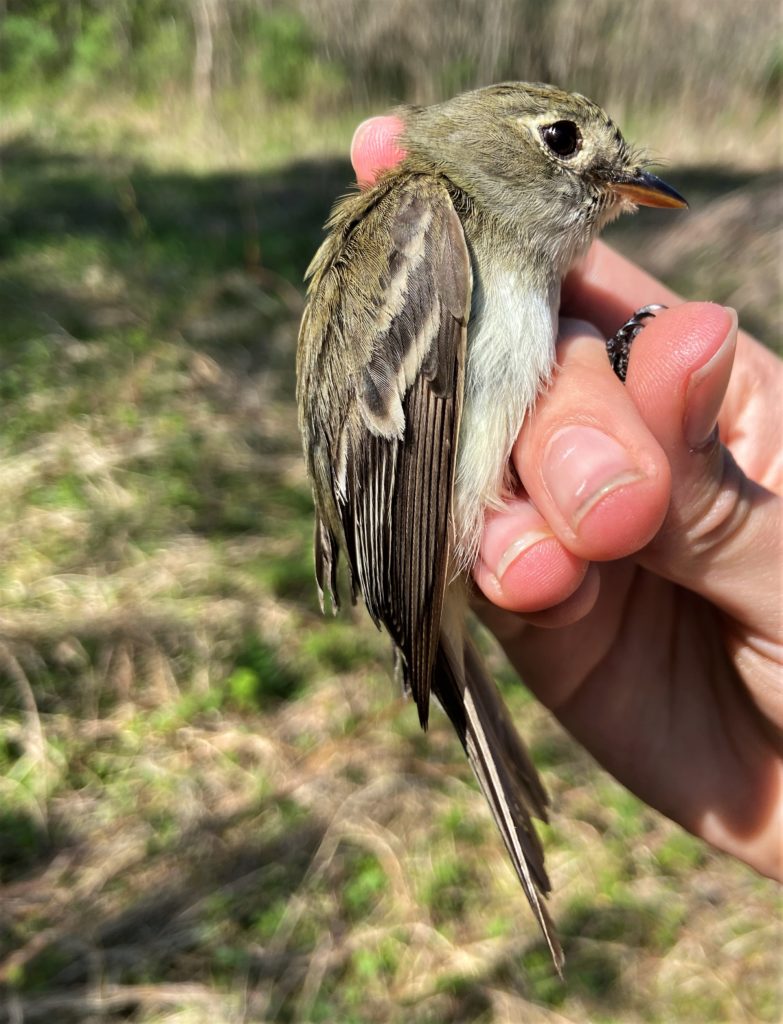
1 MAWA
2 AMRE
3 TEWA
2 BTNW
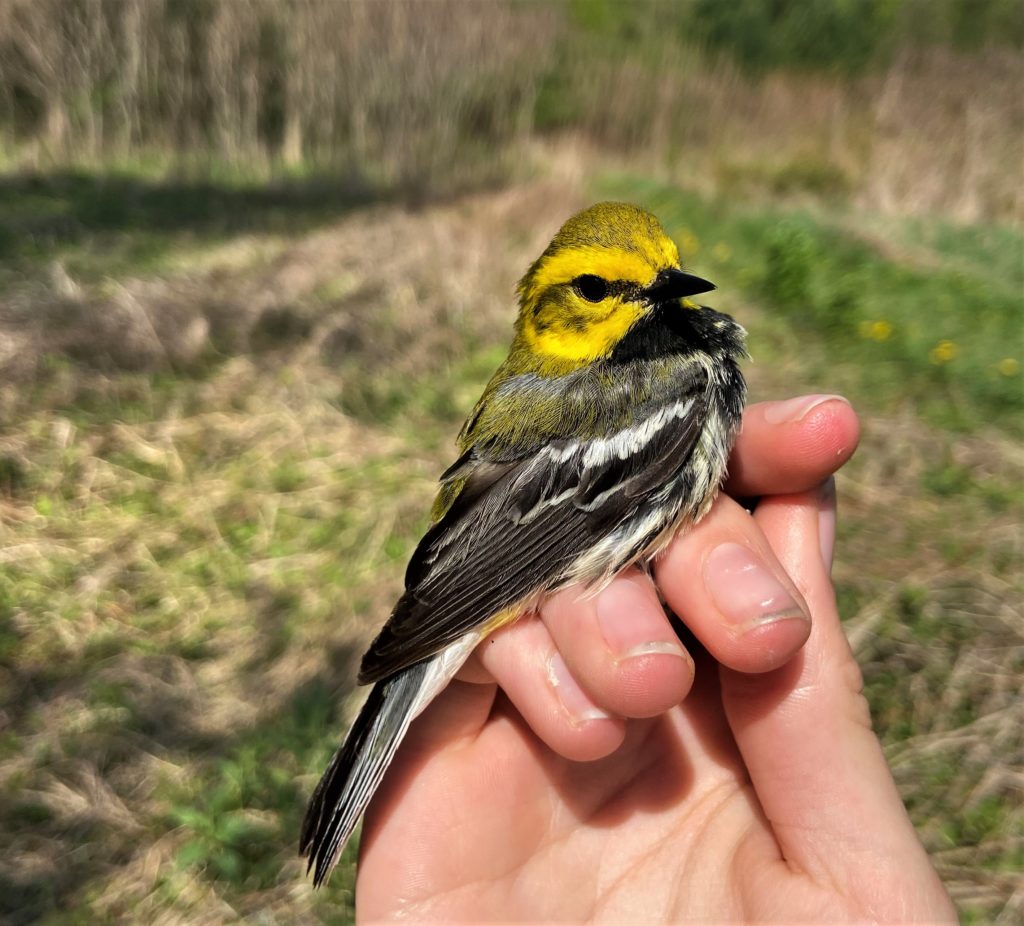
1 OVEN
3 INBU
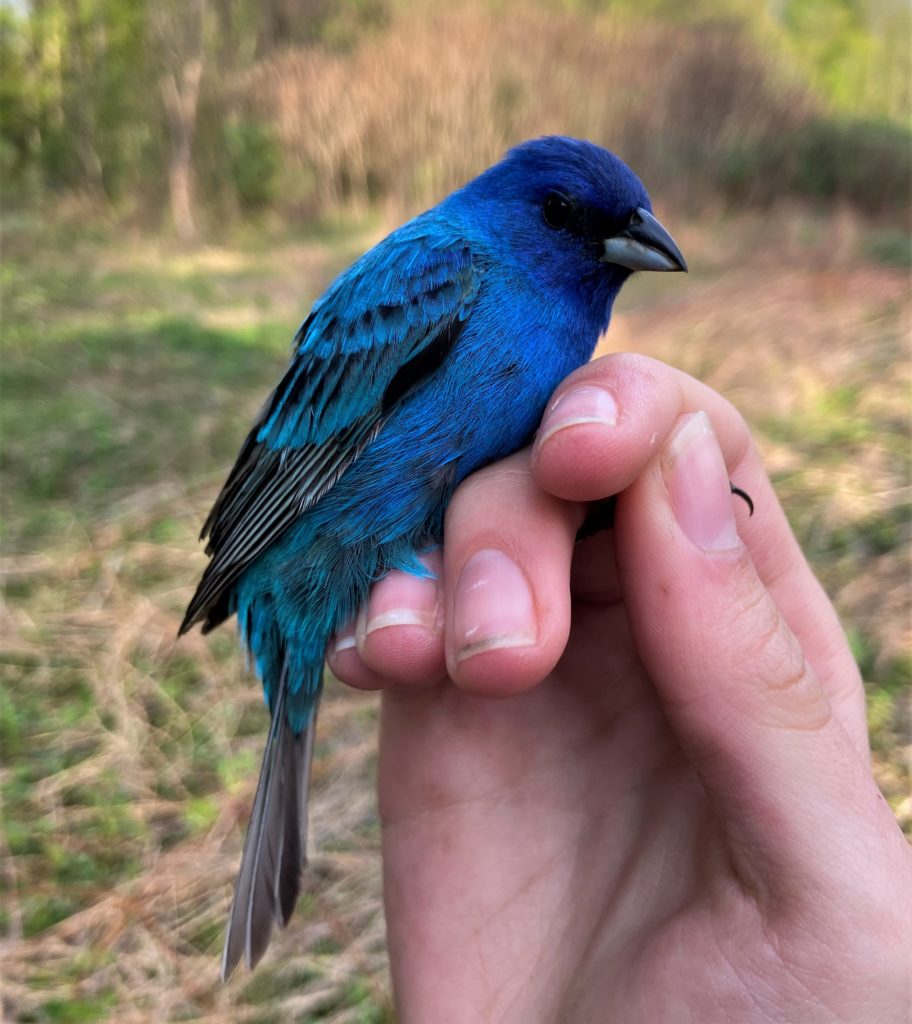
1 LISP
1 VEER
5 GRCA
1 NOCA
1 RBGR
1 AMRO
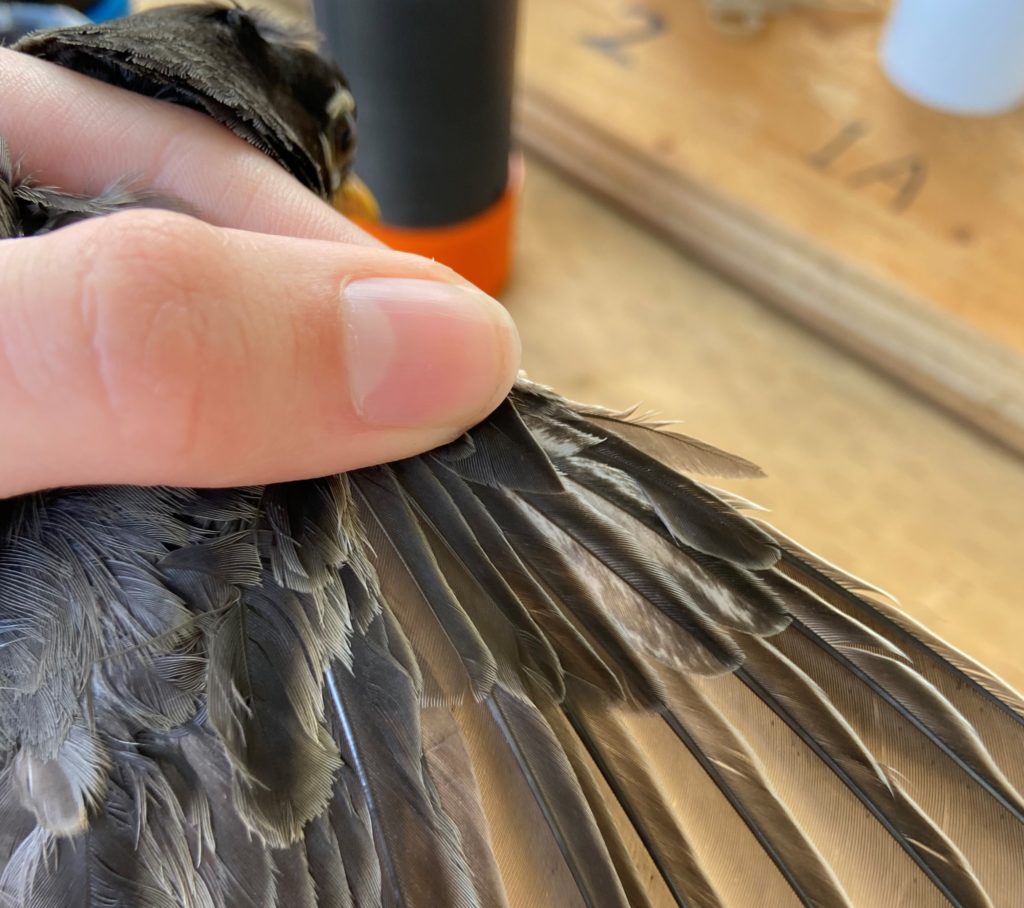
Recaps:
2 RBGR
1 SOSP
1 INBU
1 CSWA
2 BAOR
1 AMGO
+ 1 RTHU extracted
ET’s: 52 spp.
– Sarah
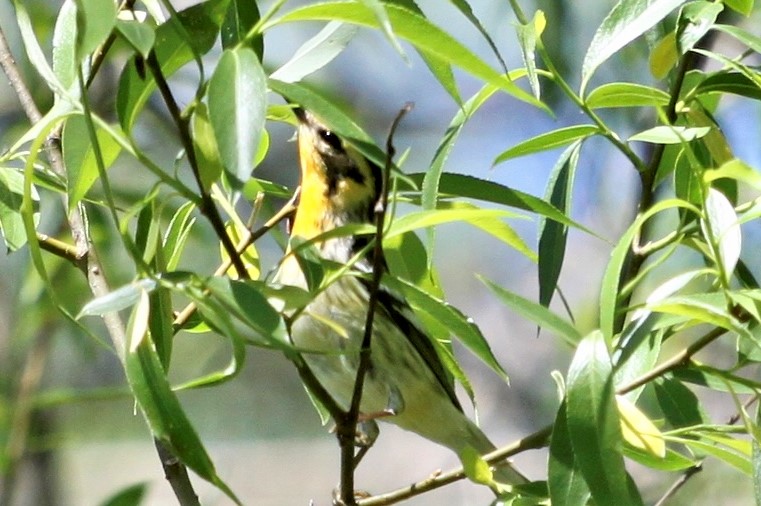
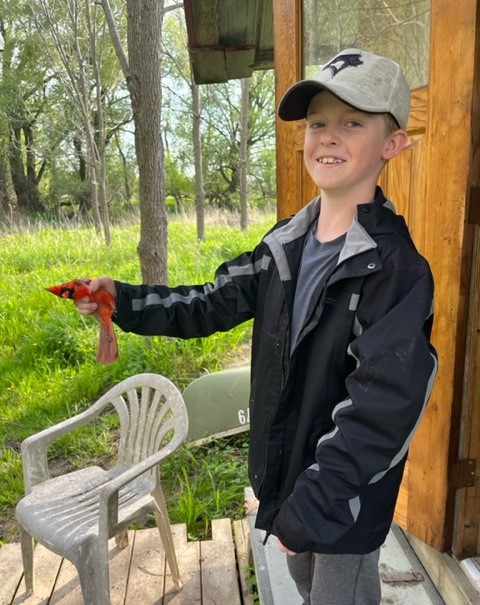
We had a fairly busy day at the Farm as well with a nice mix of birds. We got small “patches” of birds moving through the tops of the willows and then….disappearing. Locally nesting birds are quite active, sorting out territories and finding mates. Especially noticeable in this regard today were Indigo Buntings: we banded 4 males and 1 female.
Banded 27:
1 Traill’s flycatcher
1 Eastern Kingbird
1 Warbling Vireo
1 House Wren
2 Gray Catbirds
1 American Robin
1 White-throated Sparrow (this bird was missing its right foot and lower right leg – old injury – but in good shape)
1 Song Sparrow
1 Baltimore Oriole
1 Northern Waterthrush
4 Common Yellowthroats
3 Yellow Warblers
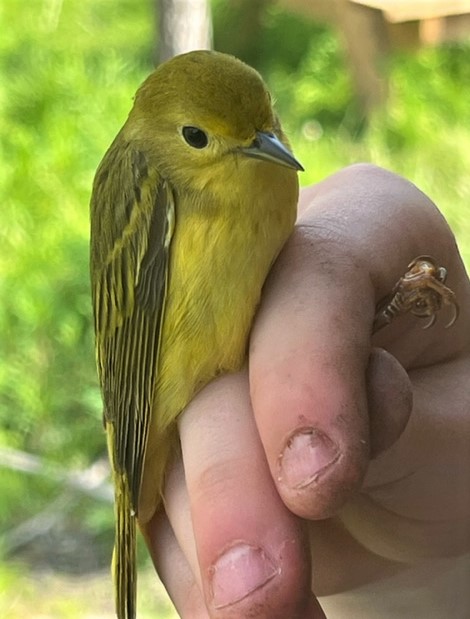
1 Myrtle Warbler
1 Northern Cardinal
5 Indigo Buntings
ET’s: 43 spp.
Karen Petrie has been dropping by the Farm fairly regularly and taking some amazing pictures. Here are two that show intimate details in the life of a Blue-grey Gnatcatcher:
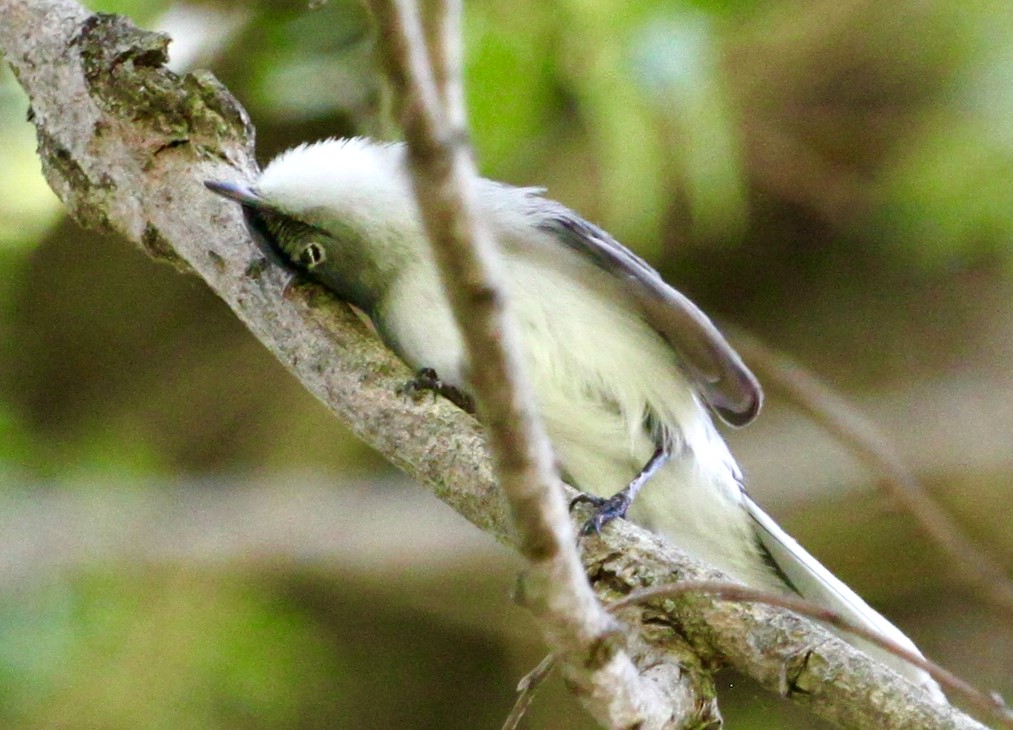
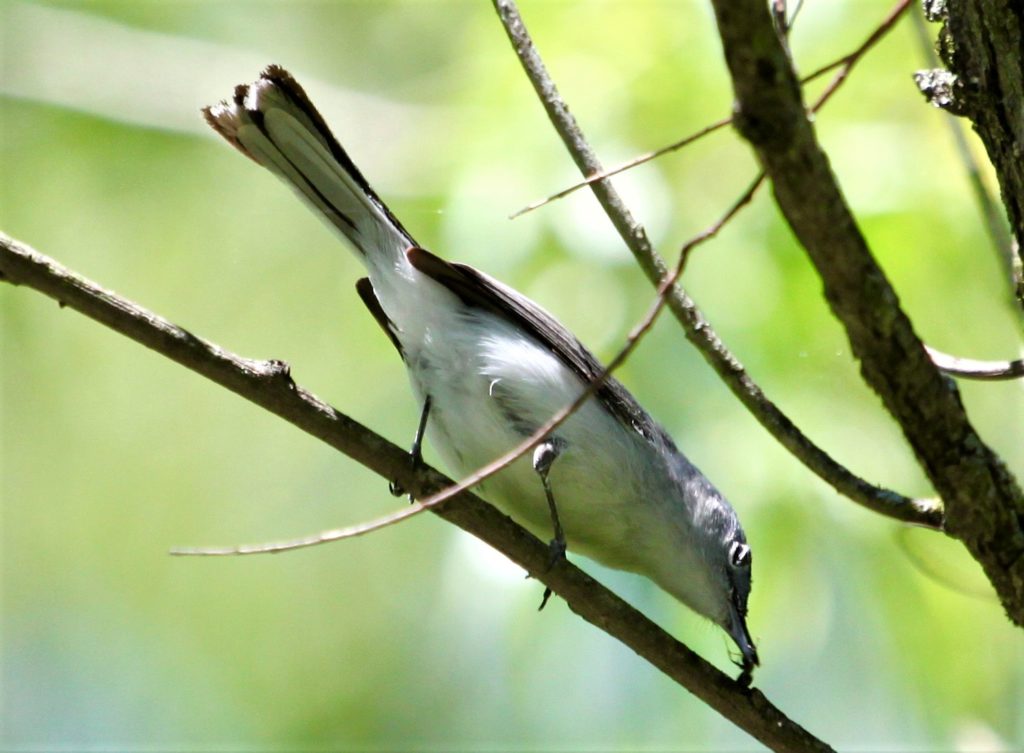
Rick
